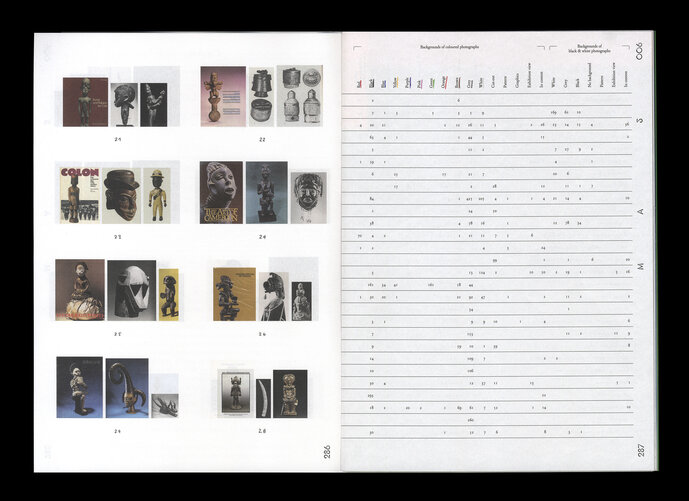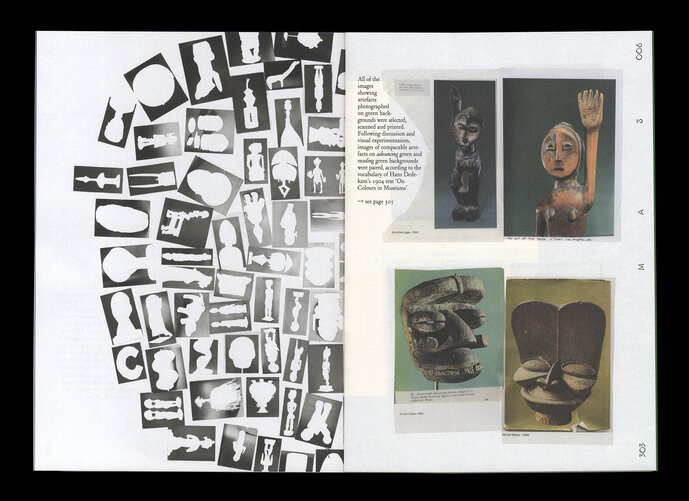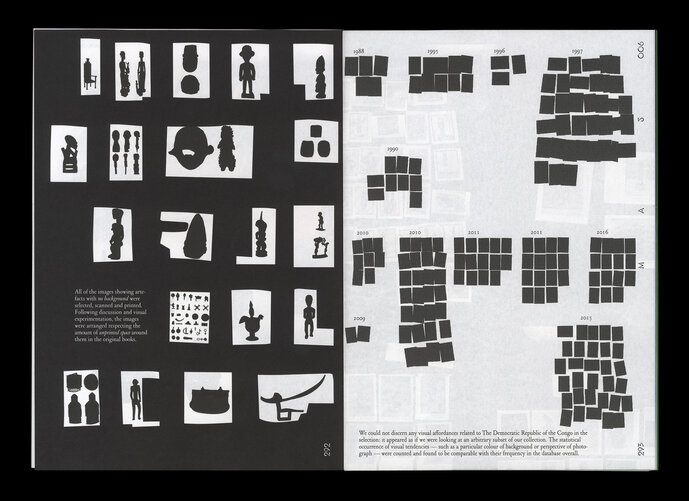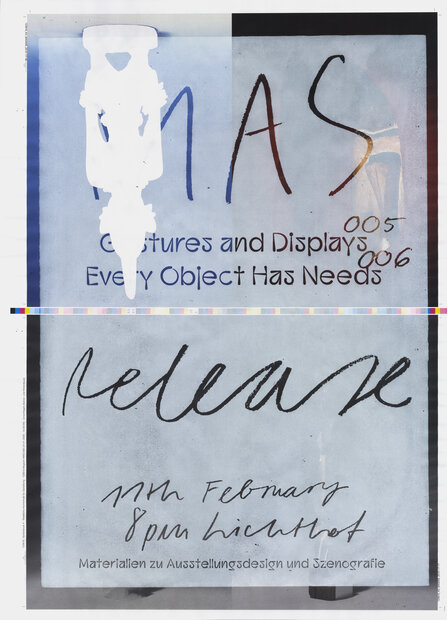

© Severin Geißler


© Severin Geißler


© Severin Geißler


© Severin Geißler


© Severin Geißler


© Severin Geißler


© Severin Geißler


© Severin Geißler


© Severin Geißler


© Severin Geißler


© Severin Geißler


© Severin Geißler


© Severin Geißler
In 2014 the Weltkulturen Museum in Frankfurt presented an exhibition titled Foreign Exchange (or the stories you wouldn’t tell a stranger). Curated by Clémentine Deliss and Yvette Mutumba — at that time director and curator of the museum, respectively — the exhibition included a survey of the museum’s photographic documentation of its collection of around 67.000 ethnographic artefacts. These images were made by studio photographers commissioned by the museum and by in-house photographers.
A publication accompanying the exhibition presents the transcript of a group discussion between invited artists, writers, anthropologists, and other commentators, organised in the context of the exhibition. Here these historical photographs are heavily criticised. Considered particularly problematic is their tendency — consistent over several decades — to depict ethnographic artefacts in isolation against plain, bright, ‘ethnic’ coloured backgrounds. This specific aesthetic is interpreted in the discussion as a kind of compensation for an extraordinary absence of knowledge about the provenance of the depicted artefacts, many of which were acquired in an intense period of activity during the colonial era by the museum’s founding director, Bernard Hagen. This issue of MAS makes some elementary bibliographic moves to qualify the rhetoric of the critique in Foreign Exchange, and toward foundational research that Deliss calls for when she writes: ‘To date there has been no critical analysis of the manner in which so-called tribal art objects or ethno-graphica have been photographed once removed from their original location of production.’
The material presented in MAS 006 is a visual research produced during a seminar initiated by James Langdon at HfG Karlsruhe in 2018. A group of 10 participants analysed a collection of 56 books of ethnographica published between the 1960s — when full-colour printing began to be commonly used in museum publishing — and the present decade. Each decade was represented by around ten titles, roughly half from Europe, half from the USA. The collection was assembled through international ethnographic book dealers, and as such is independent of the interests of any of the books’ publishers and the museums and individuals whose collections are represented. Within these parameters, the individual titles were selected visually, based on their inclusion of studio photographs of African artefacts that correspond with the aesthetics described in Foreign Exchange. No attempt is made, therefore, to quantify the extent of these aesthetic tendencies in the field of ethnographic publishing overall. Despite its necessarily modest size, the geographical and historical spread of the collection alone is indicative of the fact that these aesthetics have been commonly used, apparently without controversy, and are by no means particular to the contexts either of the Weltkulturen Museum, or German ethnographica.
The collected books contain a total of 10.189 images. Participants analysed the books directly, creating a database of their bibliographical details: their extent, dimensions, and subjects; and details of the photographs themselves: the colours and types of backgrounds used, the characteristics of lighting and cropping, and aspects of graphic design relevant to their presentation. Work then proceeded through ‘enquiries’ directed to this database, identifying subsets of images to be compiled for discussion. Comparative visual work was done manually — not at the computer — by sorting and grouping images on large tables.
Seven of these enquiries are presented in the MAS Issue 006, with brief captions describing their methodologies. Discussions were supplemented by contemporary and historical readings, and during the seminar ongoing work was socialised through regular input from guests, including Clémentine Deliss, Jan Hoek, Sarah Owens and Jelly Sarah Kouablan. Their commentaries made us all too aware that despite our best intentions, our position in a European art school and our reliance on bibliographical methods led us continually to reproduce the Western gaze even as we actively critiqued it.
Design: Severin Geißler, Cécile Kobel
Supervision: Prof. James Langdon, Prof. Andreas Müller
Publication: February 2020